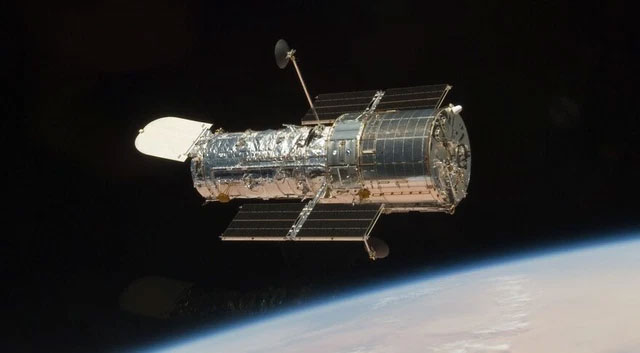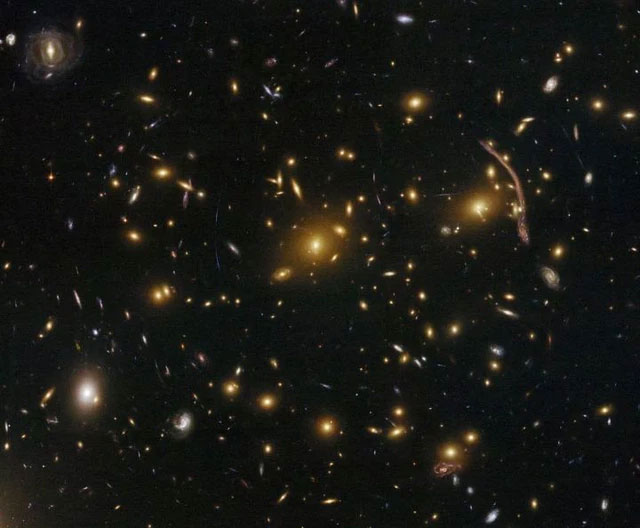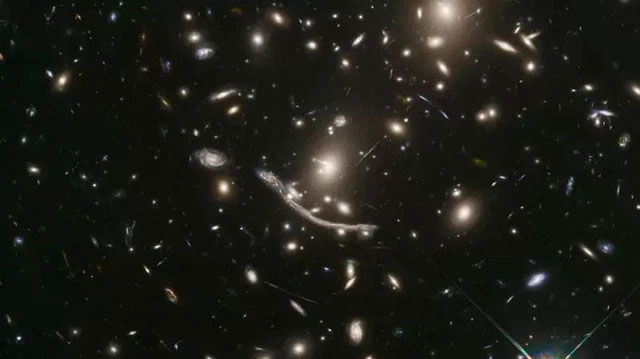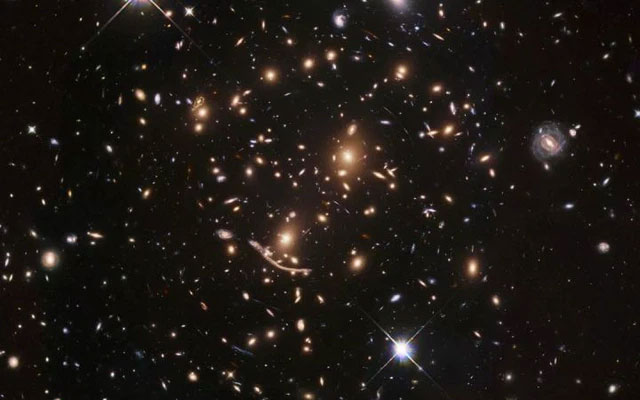The Chinese dragon is a legendary creature. This dragon has a long, serpentine body, scales like a fish, a head resembling that of a lion, and four legs with claws. Dragons are said to be able to fly and can breathe water to create rain. For thousands of years, humans have attempted to find this mythical creature, but all efforts have failed, as dragons do not actually exist.
However, while the Hubble Space Telescope of NASA was observing the dark and deep regions of Cetus, it unexpectedly discovered a sparkling, bright yellow streak in the galaxy cluster Abell 370, located 4 billion light-years away from us.

The Hubble Space Telescope (HST) is an active space telescope operated by NASA. While it is not the first space telescope in the world, it is the largest and most powerful telescope ever launched to date. It was placed into orbit around Earth at an altitude of approximately 610 km, which is about 220 km higher than the orbit of the International Space Station (ISS). Traveling at a speed of about 7,500 m/s, Hubble can complete one orbit around Earth in 97 minutes, making 15 orbits each day. The telescope is named after American astronomer Edwin Powell Hubble (1889-1953) and features a reflecting telescope equipped with a computer system and a light-collecting mirror that is 240 cm in diameter.
This is the BUFFALO program of the Hubble Space Telescope. While observing the Abell 370 galaxy cluster, scientists noticed strange distortions at the edge of the gravitational lens and nicknamed it The Dragon.

Abell 370 is a galaxy cluster located nearly 5 billion light-years from Earth, in the constellation Cetus. Its core consists of several hundred galaxies. It was cataloged by George Abell and is the farthest cluster listed in his catalog.
The Abell 370 galaxy cluster contains hundreds of galaxies, each with tens to hundreds of billions of stars, and the amount of dark matter in this cluster is believed to be extremely large, creating a significant gravitational field.
As light from behind the galaxy cluster passes through this gravitational field, the gravity is so strong that the path of the light bends, resulting in a magnification effect known as gravitational lensing, which allows us to see objects that we would not normally be able to observe.

Hubble simultaneously uses two cameras to observe two different types of light, one camera capturing Abell 370 and the other looking deep into the early universe by observing a “parallel field”, a thinner portion of the sky adjacent to the Abell 370 cluster. These observations of Abell 370 and the parallel field are part of NASA’s recently completed ambitious Frontier Fields program. According to IBTimes, the goal of Frontier Fields is to conduct the deepest observations of large galaxy clusters like Abell 370 and the older distant galaxies behind them.
The mysterious dragon observed this time is not a real dragon, but a distorted image of a galaxy.
Scientists believe that it is actually five images of the same spiral galaxy, magnified and stretched by the Abell 370 galaxy cluster to form an arc shape resembling that of a Chinese dragon.
However, some scientists previously thought that the dragon could be several galaxies located about 5 billion light-years away from us.

In this image, the slightly yellowish white objects are the largest and brightest elliptical galaxies containing billions of stars. The slightly blue objects are spiral galaxies (like the Milky Way that contains our Earth), which typically host younger, slightly blue stars. The mysterious blue light arcs scattered throughout the image are distorted images of galaxies located behind the Abell 370 cluster. Abell acts as a natural lens, warping space and manipulating the light passing through it to Earth, magnifying and stretching the images of these galaxies, which would be too faint for Hubble to observe otherwise. This phenomenon is known as gravitational lensing, which helps to reveal distant galaxies that can only be observed thanks to natural lenses like the Abell 370 galaxy cluster.
By measuring the arc of The Dragon, scientists can track and determine the level of distortion and the amount of radiation between these galaxies and dust, while calculating the missing dark matter to understand the structure of the universe and the deepest issues within it.
|
NASA and the European Space Agency have begun a mission to illuminate the development of the earliest galaxies in the universe. The BUFFALO survey will observe six massive galaxy clusters and their surrounding environments. Using the Hubble Space Telescope, a BUFFALO survey will be conducted to observe six massive galaxy clusters and their surrounding environments. NASA states that this mission is extremely important because understanding the formation and development of the first galaxies in the universe is “crucial for our understanding of the universe.” This will allow astronomers to determine how large galaxy clusters formed during the first 800 million years after the Big Bang. |


















































